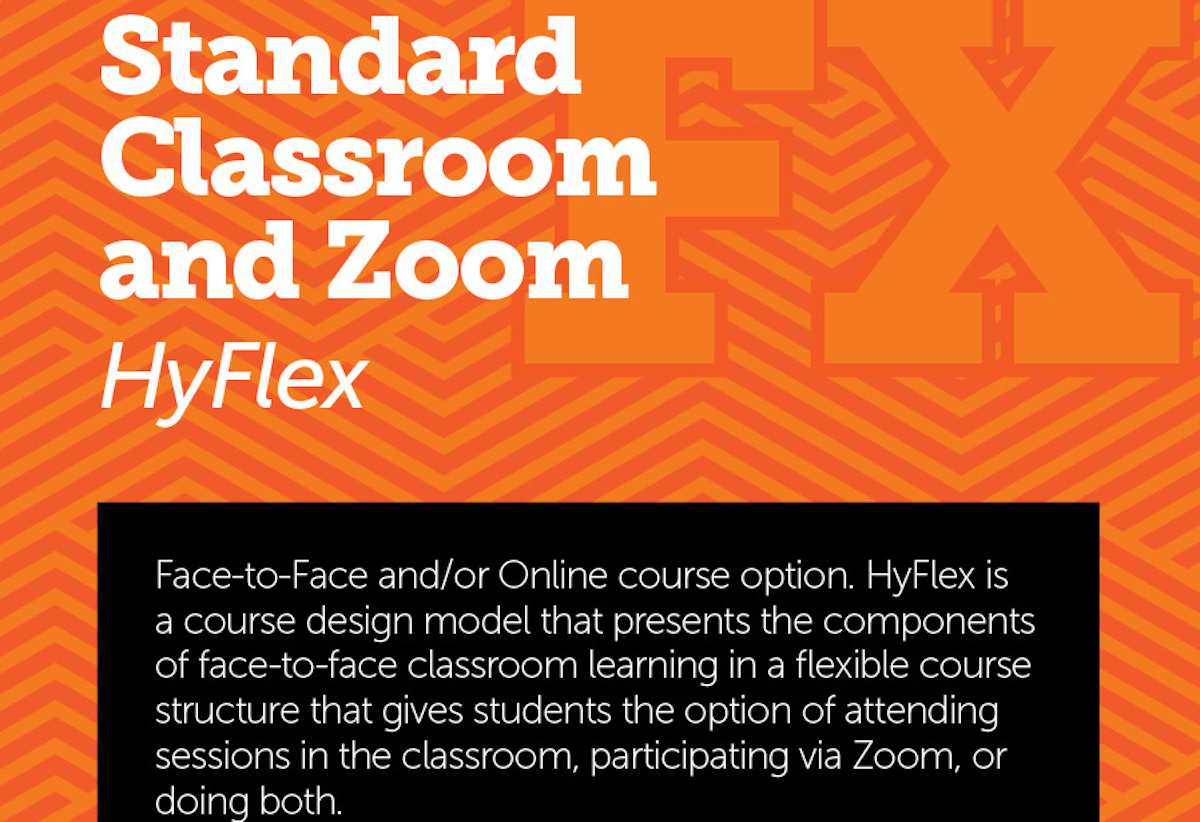ISU offering broad variety of options on how students can take classes
August 6, 2020

Students need to understand class ‘Schedule Types’
POCATELLO – In response to the coronavirus pandemic, Idaho State University is offering a variety of ways students can take classes and it is important students understand what the different types of classes are when they sign up.
Classes are being offered in-person, strictly online, via distance learning, remotely using applications like Zoom and through a mix of delivery methods. The nine different types of “Schedule Type” classes offered are listed on the ISU “Class Schedule Search” page in the “Schedule Type” box, and are listed when an individual class is pulled up.
Many of the “Schedule Types” are self-explanatory, but students need to be fully aware of what type of class they are enrolling in and are urged to check the “Schedule Type” carefully. As a result of the pandemic, many classes have transitioned from face-to-face classes to online and a mix of online and in-class instruction.
A definition for each type of classes appears below and are available online at https://www.isu.edu/registrar/
“Know the difference between ‘Fully Online, no set meeting time’ and ‘Fully Online, set meeting time’ classes,” Tokle said. “‘Fully Online, no set meeting time’ means students don’t have to log on to class at any specific time, so if they want to watch the class video or do the assignment at 2 a.m. they can do that.”
“Fully Online, set meeting time,” however, requires students to participate at a specific time, just as they would if it was an in-person class.
Students signing up for “Standard Classroom and Zoom” classes, also known as hyflex classes – which are classes where some students attend in-class and others participate remotely – need to check with their professors before their first class to see if they are supposed to participate in class or remotely.
“For those students who are in those ‘Standard Classroom and Zoom’ classes, not everyone comes to the classroom every day – that is how we are able to maintain the 6-foot social distancing,” Tokle said. “It is very important that students find out before the first day of class if they are supposed to be in the classroom or join via Zoom or another web-conferencing tool. We just don’t want the classrooms over loaded on the first day.”
Faculty teaching “Standard Classroom and Zoom” classes will try to inform students ahead of the first class if they are supposed to attend in-person or remotely, and students can also check on Moodle, ISU’s online learning system (https://www.isu.edu/itrc/
“Please check your ISU email account and watch for information, and also log into Moodle as soon as you can because faculty will post information there,” Tokle said.
The different “Schedule Type” of classes being offered, in order they appear on the Class Schedule page, are:
• Blended, reduced in-class time, code BL – These classes feature reduced in-person seat time and have a combination of face-to-face classroom combined with online days that do not require a student to be in a certain place at a certain time. For example, a three-credit course meets only Monday and Wednesday in a classroom (for an hour each class period) and then equivalent material is delivered online in place of a Friday class (33% of the class is online).
• Classroom, code CL – Standard Lecture in the classroom.
• Dedicated Video Conference Classroom – These classes are delivered on the Video Conference Network at a dedicated classroom at an ISU campus location. Individual remote connections are also possible, by contacting class instructors.
• Fully Online, no set meeting time, code AO – Fully Online course. Coursework delivery is via web, email, and/or message boards in online forums such as Moodle, Google groups, etc. The course is most often delivered using Moodle. These types of courses are NOT time or place dependent.
• Fully Online, with set meeting time, code SO – Fully Online course via Zoom with set meeting times. These are online courses where students and faculty are together at the same time (mountain standard MST) and will be using the Zoom platform for instruction and class discussions.
• Lab or studio, code LB – Attend lab or studio in-person. Lab or Studio. Class requires specialized equipment in the classroom.
• Standard Classroom and Zoom (HyFlex), code FX – Face-to-Face and/or Online course option. HyFlex is a course design model that presents the components of face-to-face classroom learning in a flexible course structure that gives students the option of attending sessions in the classroom, participating via Zoom, or doing both. Students can change their mode of attendance weekly or by topic, according to need or preference and in consultation with their faculty member.
• Mostly Online – Moodle, code OL – The majority of the course is online but may require up to five in-person meetings, for example, taking tests or for crucial lectures.
• Other, code OT – This designation is for dissertation, thesis, practicum, and clinical rotations.
Categories:
